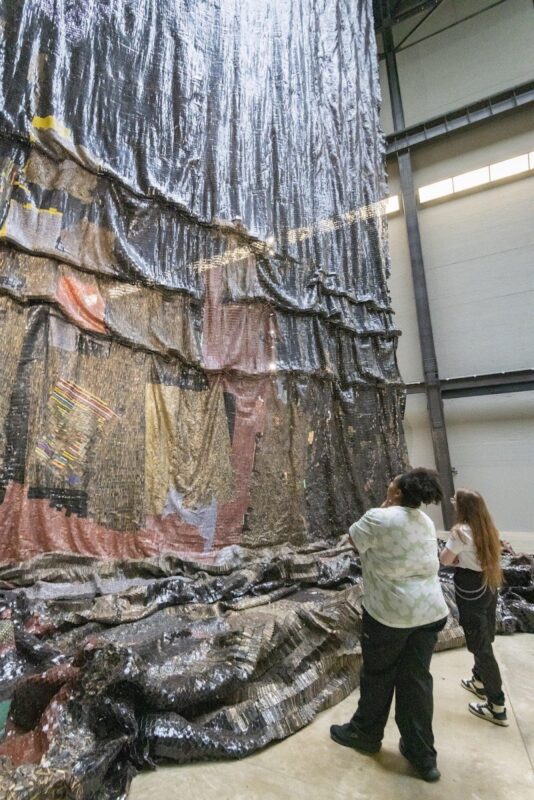
National Gallery visitors contemplate The Vendramin Family by Titian. Photograph: Alex Segre/Alamy
The National Gallery in London has reduced the number of warders it employs in a move that has raised concerns among some art and security experts for making its collection more vulnerable to damage or theft.
News of the staff cuts comes barely a month after two Poussin masterpieces were vandalised by a man who sprayed them with red paint.
Warders, officially titled “gallery assistants”, previously oversaw one room but are now required to watch over two. The gallery argues that this arrangement was planned before the need to identify savings, as a “more effective means of invigilation” and a third of the gallery’s rooms use the arrangement. It also says the system is deployed by most other important galleries and museums in the UK and around the world.
However, a gallery insider believes this new system gave the vandal time to attack two paintings in room 19 –The Adoration of the Golden Calf, and The Adoration of the Shepherds – because the warder’s attention was split between two rooms.
Yet the gallery is extending the arrangements, and from this week Goyas and Canalettos in rooms 38 and 39 will also be overseen by one warder only. The insider warned that the rooms were busy with “many blind spots”.
The internal source said that faced with increasing visitor numbers and with “trouble-making” people entering the National Gallery, a reduction in warder numbers would place paintings in much greater danger of theft or damage. The source said: “If the policy of one warder per room had been kept…the damage would have been reduced to just one painting.”
Peter Osborne, a former national security adviser to the Museums and Galleries Commission, said that cuts in security were widespread in museums. He said: “They’re trying to manage with less. That’s when things will start going wrong or will start going missing.” In the past, museums would shut a room if they could not staff it, he recalled. Technology might improve the quality of security but it was unlikely to replace the human response.
Michael Daley, director of ArtWatch UK, who has been an outspoken critic of the gallery in the past, described the security reduction as reckless. Daley said: “The most alert and attentive person cannot be in two places at once … and cannot see through walls.” He acknowledged the gallery’s claim that perambulatory staff were more effective, but said: “The quantity of surveillance is halved whether or not its quality improves.”
Another leading expert on art security, Will Geddes, described gallery warders as being a “visual deterrent”.
The National Gallery insists that the changes to its security arrangements are not a cost-saving measure.
A spokeswoman for the gallery said security was of paramount concern, adding: “The National Gallery security arrangements are in keeping with those of other major national and international galleries and museums. Our arrangements have been approved by the national security adviser for museums, as appropriate for the protection of the collection.
“We are closely monitoring invigilation arrangements and seeking feedback externally and internally, including from the national security adviser for museums.”
guardian.co.uk © Guardian News & Media Limited 2010
Published via the Guardian News Feed plugin for WordPress.









